
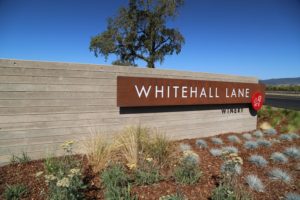
 Whitehall Lane Winery is one of numerous family owned wineries in Napa Valley; the winery and tasting room are located on the west side of Highway 29 several minutes south of the town of St. Helena close to the only section of the highway where the train tracks cross the road. Note that the winery and tasting room are not located on nearby Whitehall Lane nor is Whitehall Lane Winery white from the outside, rather the exterior of winery building is painted distinctive yellow and subtle blue colors. While the winery has a St. Helena address, the site is actually in the Rutherford Appellation. Old timers may remember the Great Whitehall Pumpkin Patch on Whitehall Lane from the 1970s.
Whitehall Lane Winery is one of numerous family owned wineries in Napa Valley; the winery and tasting room are located on the west side of Highway 29 several minutes south of the town of St. Helena close to the only section of the highway where the train tracks cross the road. Note that the winery and tasting room are not located on nearby Whitehall Lane nor is Whitehall Lane Winery white from the outside, rather the exterior of winery building is painted distinctive yellow and subtle blue colors. While the winery has a St. Helena address, the site is actually in the Rutherford Appellation. Old timers may remember the Great Whitehall Pumpkin Patch on Whitehall Lane from the 1970s.
The winery and accompanying property were purchased in 1979 by Art & Bunnie Finklestein and Art’s business partner and brother, plastic surgeon Alan Steen (died in 2020) & his wife Charlene. Their first vintage was from 1981. The Finklestein’s are a well-known wine making family in Napa – currently operating Judds Hill Winery. In 1988 the Finklestein’s sold the winery to a Japanese based businessman Hideaki Ando (who owned a real estate investment company in Japan).
In 1993 Ando sold Whitehall Lane Winery to the Leonardini family (the current owners). Tom Leonardini (last name means ‘little lion’ in Italian) grew up in the car rental business- his mother’s family founded the national rental company, National Car Rental. Tom worked there for a few years, started Pacific Car Rental System – sold that and then founded what would become a very successful car rental business, American International Rental Car (growing this company to multiple offices throughout California) before selling in 1985. The Leonardini family’s roots in California date back to the Donner Party – a relative, Margaret Breen came to California in 1846 with the Donner’s.
Little did Tom know how opening a wine shop in San Francisco would change the course of his family’s history. In the early to mid 1980s he and his wife Karen purchased a parking garage several blocks southwest of the popular Union Square shopping district. Tom and Karen enjoyed wine for many years and decided to open a boutique wine shop next to the parking garage, initially focusing on Napa wines but later including wines from other parts of California. They opened the tiny Napa Valley Wine Exchange in 1985 – for many years, Tom and Karen’s daughter Kristen helped oversee the operations of this shop. The selection is excellent with a wide range of pricing, with plenty of small Napa producers represented. However, after 3+ decades of ownership, in 2020, the Leonardini’s sold Napa Valley Wine Exchange to Rick Jones, former Napa Valley Winery Exchange General Manager.
Through the Napa Valley Wine Exchange, Tom met a number of winemakers and others in the wine business. He learned of a specific property that was for sale but not yet listed publicly – he drove up to the valley, met with Hideaki Ando and purchased White Hall Lane Winery in 1993. He hired Gary Galleron on as their founding winemaker.
Over the years, the Leonardini family has acquired additional acreage in the valley and while they continue to source gapes from selected growers, most of their grapes now comes from their own vineyards totaling more than 200 acres of mostly prime valley floor vineyards divided among 8 unique vineyard sites. These include Leonardini Vineyard, Fawn Park Vineyard, Millennium Vineyard, Winery Vineyard 1979, Bommarito Vineyard, Oak Glen Vineyard, Rassi Vineyard and in neighboring Sonoma Valley, Sonoma Stage Vineyard.
Napa Valley Winery Exchange, San Francisco
A special mention must be given to the Oak Glen Vineyard; in 2016 it was planted to two experimental varieties including Camminare Noir, a cross between Petite Sirah and Cabernet Sauvignon and Paseante Noir.
Both grapes are certainly among some of the rarest varieties growing in Napa Valley. Paseante Noir was developed by UC Davis grapevine geneticist Dr. Andrew Walker and released for commercial use in 2019. This variety is a cross of 50% Zinfandel, 25% Petite Sirah and 12.5% Cabernet Sauvignon. It is 97% V. vinifera, 1.5% V. arizonica and 1.5% V. rupestris. Like Camminare Noir, it is highly resistant to Pierce’s disease, a disease caused by a type of bacteria growing on plants such as blackberries and willows and is spread by certain vectors including leafhoppers as well as infected plant propagation material. Pierce’s disease inhibits water and nutrient intake in the grapevine resulting in a variety of detrimental symptoms including wilting and premature defoliation.
Tom and Karen’s children have been or are involved with the wine industry in some capacity. One of Tom’s axioms for working in the family business is you must have worked somewhere else prior. This sage advice usually serves family-owned wineries well – especially those involved in generational ownership. Daughter Katie oversees the overall winery operations, and her brother Tom is responsible for domestic and international distribution. Another son, Tony is a winemaker.
The winery offers a wide range of premium wines at decent prices; many of which have won numerous awards over the years. Their Cabernet Sauvignons and Merlots are balanced, food friendly wines -these two varieties are among their two most produced wines annually.
Whitehall Lane has long used screw cap enclosures for some of their wines and were among Napa’s first wineries to do this. Several vintages of their reserve Cabernet Sauvignon was enclosed with what is called a Vino-Seal, a glass enclosure. As well as being perfectly functional, this enclosure also makes a neat conversation piece as well as a pretty souvenir. They were the first Napa winery to use an enclosure such as this. The cost is a little more than a cork but the overall savings and benefits to both the winery and consumer is great. These types of enclosures certainly prevent spoilage issues related to cork taint.
Whitehall Lane was one of numerous wineries that lost inventory in the now infamous arson wine warehouse fire in Vallejo in 2005. That fire was one of the reasons why they expanded their own barrel facilities now allowing them to store all of their barrels on site. In 2018 750 solar panels were installed on the roof of the winery and the winery is now certified Napa Green, a certification program by Napa County Department of Public Works and the California Green Business Program overseeing water conservation and reduced energy and waste within Napa based County wineries.
Winemaker Jason Moulton crafts wines to have balance and concentration without being heavily influenced by oak. He tends to age the wines on the lees longer – looking for a mid-palate mouth feel and richness. The wine making team uses mostly French oak along with limited amounts of American and Hungarian oak. Their French oak is created from wood that was seasoned outdoors for three years (two years is more of a norm). And in 2018 they began fermenting with non-inoculated yeasts (indigenous yeast) for select wines.
Select Wines
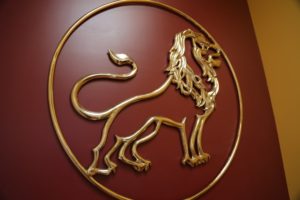
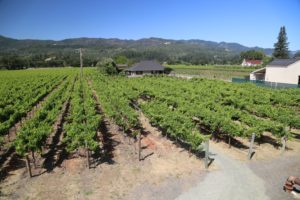
 Whites
Whites
The 2023 Whitehall Lane Sémillon Rutherford, Napa Valley is 91% Semillon and 9% Sauvignon Blanc. This wine is pale yellow in color; the aromatic that jumped out at us when we first sniffed this wine was pineapple, followed by scents of orange blossom, nectarine, apricot, baked apples, vanilla, star jasmine, and lychee. Diverse and highly aromatic, this bouquet is a joy to smell. Minerally, the palate offers flavors of mandarin orange, pomelo, honey crisp apple, dried peaches, pineapple guava, gooseberry and pear. Crisp, clean, balanced and refreshing, this spring and summer time dandy will make the perfect pairing poolside with a plate of foie gras, goats cheese, Dungeness crab and a lightly dressed garden salad. The Sémillon grapes were whole whole cluster pressed, and fermented using indigenous yeast in 1,000 liter wooden barrel fermenters. The wine was then aged sur lies with regular battonage for 4 months. The Sauvignon Blanc was blended in just prior to bottling. Only 12.8% alcohol.
The 2021 Whitehall Lane Sonoma Valley Chardonnay is deep gold in color; this perhaps smells like what California sunshine would be if it was a dessert. This is an olfactory celebration with expressive and wide open scents including the caramelized sugars of creme Brule, vanilla pudding, tapioca, butterscotch, marzipan, melting butter, peaches in light syrup, apricot, yellow nectarines at the peak of ripeness, Golden Delicious apples, almost overripe cantaloupe, mango and pineapple. The palate is intensely flavored with apricot, peach, nectarine, pineapple, vanilla and honeycomb with a persistent note of hazelnut. The finish is rich, long lasting and continues to produce loads of flavor well after one has swallowed. Its texture is rounded and supple, supported by a balanced acidity. Drinks well by itself, but if we were to pair it with something, that ‘something’ would need to be cream based or have some inherent oiliness to hold up to the richness of this bottling. This wine overdelivers for the price.
This Chardonnay was fermented using indigenous yeasts in 100% French oak barrels of which 35% were new and 65% neutral. Post primary fermentation, 50% of the wine was put through malolactic fermentation with battonage conducted every three weeks. It was aged on the lees for 14 months before bottling.
The 2016 Whitehall Lane Sauvignon Blanc (from Rutherford) is blended with 14% barrel fermented Sémillon. This wine shows pale yellow in the glass, sporting aromas of citrus blossom, lemon peel zest and honeysuckle. This bottling is nicely balanced stylistically between a grassy or green New Zealand wine of this variety and Napa Valley sunshine filled richness. Artfully made with no harsh edges, this wine is perfectly poised between flavor, weight and acidity. It features a lively finish with flavors that linger for some time including of citrus and pineapple.
In 2021 Whitehall Lane released their 2020 Blanc de Noirs (a brut) – the first ever sparkling wine bottled under Whitehall Lane. The grapes are from the Leonardini family-owned Stage Vineyard in neighboring Sonoma County. This wine was made in the Méthode Champenoise tradition.
Reds
The 2020 Whitehall Lane Pinot Noir, Sonoma Stage Vineyard Petaluma Gap is made from four distinctive clones including Calera, Swan, 115 and 667. This wine is pale to medium ruby in color; the bouquet offers a pleasing balance between its spice and its fruit characteristics. These include aromas of dried mushroom, a hint of mocha, clove, cherry cola, root beer, raspberry, red licorice, dried cranberries and and orange peel zest. The palate is primarily red fruited with flavors of raspberry, strawberry, pomegranate, cherry, and licorice accompanied by white pepper and dried sage. The tannins are gentle and finely-grained. The finish lingers juicy, savory and with a subtle but persistent drying note showing more on the front of the palate than the back. This wine was aged in French oak barrels, of which 35% were new for 14 months. It was bottled unfined and unfiltered. We would love to pair this with Peking Duck although the smell of fava beans cooking in the wok downstairs is also highly tempting.
The 2019 Whitehall Lane Napa Valley Merlot is a blend of 87% Merlot, 8% Cabernet Sauvignon, 3% Malbec and 2% Petit Verdot. This wine is deep ruby; the bouquet sings loudly with plenty of fruit including cherry, plum and raspberry along with licorice, stewed berries and some baking spices including cardamom. There are also notes of mocha, cocoa powder, old cedar wood and tobacco. Balanced, with both flavor and textural depth, this wine reveals flavors of red plum, raspberry, currant, cranberry, and cherry. There are some darker and savory undertones at play including of crushed peppercorn and dried herbs. The tannins are gravelly, dusty and sport a moderate but comfortable grip. This wine finishes with some warmth in the back of the palate. Clocks in at a listed 14.9% alcohol. It was aged in 35% new French oak and 65% neutral oak for 20 months prior to bottling. Pair with lighter style meat including BBQ chicken wings.


 The 2021 Whitehall Lane Petit Verdot, Fawnpark Vineyard is deep purple and opaque in color – teeth staining; highly expressive, the open-knitted bouquet offers aromas of dark plum, blackberry, boysenberry jam, sage, toast, cocoa powder and mocha. Rich, red and dark fruited, the palate reveals flavors of plum, blackberry, dark currant and dark chocolate. The tannins exert a moderate and grainy grip with persists beyond the fruit on the extended and mouthwatering finish. This wine drinks well in its youth (for reference we tasted less than 3 years post vintage) but has plenty of ‘stuffing’ to ensure it will age well for 12-15 years. But for now, we want to pair this with a medium rare tri-tip straight from the BBQ on a warm summer Napa Valley evening surrounded by a tight-knit community of great friends.
The 2021 Whitehall Lane Petit Verdot, Fawnpark Vineyard is deep purple and opaque in color – teeth staining; highly expressive, the open-knitted bouquet offers aromas of dark plum, blackberry, boysenberry jam, sage, toast, cocoa powder and mocha. Rich, red and dark fruited, the palate reveals flavors of plum, blackberry, dark currant and dark chocolate. The tannins exert a moderate and grainy grip with persists beyond the fruit on the extended and mouthwatering finish. This wine drinks well in its youth (for reference we tasted less than 3 years post vintage) but has plenty of ‘stuffing’ to ensure it will age well for 12-15 years. But for now, we want to pair this with a medium rare tri-tip straight from the BBQ on a warm summer Napa Valley evening surrounded by a tight-knit community of great friends.
The 2014 Whitehall Lane Napa Valley Cabernet Sauvignon reveals an elegant bouquet that is slightly floral in its aromatic presentation (dried rose petal) along with both red and darker fruits. Offers a pleasing density of fruit on the palate showing flavors of dark plum, spicy plum skin, Asian spices and black pepper. The finish features mouthwatering acidity supported by integrated but long lasting tannins. With its balance and bright acidity, this is a very versatile food wine.
The 1989 Whitehall Lane Cabernet Sauvignon (tasted 34 years post vintage) is garnet and brickish red in the glass; the bouquet offers scents of sweaty leather, damp and freshly turned over earth, mushroom, tobacco spice, dried blackberry and cherry and dark fig. It also shows lights notes of coffee and espresso. There is still fruit present but the aromas are dominated more by tertiary characteristics. If a wine has all the attributes to carry it several decades and has been property cellared, its always nice to spend more than a cursory amount of time with it. And as it opened, we were rewarded with additional layers of fruit on the bouquet. The energetic acidity has played a prominent role in carrying this wine more than three decades at the time of our tasting. Its shows bright, savory and mouth watering across the palate with flavors of red cherry, red currant and cranberry. The finish offers plenty of vibrancy, a light dryness on the back of the palate and lightly textured but still felt tannins.
Dessert
For dessert wine lovers their Belmuscato (an Orange Muscat) is sweet with a long finish and not overly syrupy like some of the Muscat wines we have tried. The 2013 vintage is 8% residual sugar. It is golden yellow in the glass – very aromatic with notes of apricot, hibiscus – smells like a tropical floral garden! Has some weight on the palate with a noticeable roundness, almost oily – with flavors of dried apricot, ripe peach and honey. A lusicious wine for dessert wine lovers who enjoy ripe fruit, sweetness and intense flavors. Finishes sweet.
The Whitehall Lane Belforte Port-style wine is a rare bottling indeed for a Napa Valley producer. The reason for this is that it is made from Petite Sirah grapes. Most wineries in the valley that make a port-styled wine often use Zinfandel grapes. The 2005 Whitehall Lane Belforte is rich in alcohol and flavor with a prudent amount of residual sugar. In other words, one won’t be left gasping because of the sweetness in the back of the throat.
—

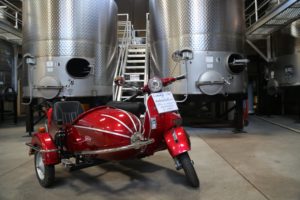
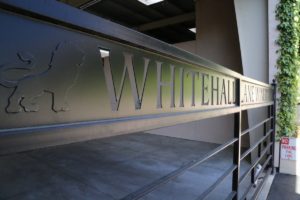 The tasting room is rather spacious, and the staff is very knowledgeable and friendly and can provide recommendations for other area wineries. Like other nearby Highway 29 based wineries the tasting room can become crowded especially on summer and harvest weekends. Due to the winery’s location – people often start or end their day with a tasting here – so it can be busy in the earlier mornings and or later in the afternoon.
The tasting room is rather spacious, and the staff is very knowledgeable and friendly and can provide recommendations for other area wineries. Like other nearby Highway 29 based wineries the tasting room can become crowded especially on summer and harvest weekends. Due to the winery’s location – people often start or end their day with a tasting here – so it can be busy in the earlier mornings and or later in the afternoon.
Many visitors to the winery only see the tasting room. But there is much more to the property located behind the winery. Looking for a more personalized and intimate tasting experience? Whitehall Lane offers a number of private tasting experiences available by appointment only including the Vineyard Tasting held outdoors (weather permitting) among their gardens, surrounded by their estate vineyards (and a small demonstration vineyard). Guests may also book a private tasting in the Club Room – this room is generously surrounded by windows which look over acres of vineyards with the Mayacamas mountains forming the backdrop of the west and views of their barrel room. The wines served here are only available at the winery.
Whitehall Lane holds several annual events throughout the year including the Lobster feed (always in June) and the annual open house typically held in September. And the winery offers an under the radar, “Cooking Demonstration and Wine Pairing Experience” offered most Fridays and Saturday by appointment only. This two+ hour experience is available for a minimum of 4 people and a maximum of 8. Their private chef prepares a lunch for the guests along with identifying the best Whitehall Lane wines to pair the particular dishes. Whitehall Lane also works with the Napa Valley Wine train to offer guests of the train a tailored tasting experience.
Total distribution has fluctuated over the years (from 5,000 cases in their first vintage) to now around 45,000 cases annually. They have excellent domestic distribution and some international presence including in parts of Canada, Japan and the UK. For more information, to purchase wine, to schedule a tasteing, to join their mailing list or one of their wine clubs, visit: www.whitehalllane.com
Hospitality
Winery
Winery Estate Vineyard








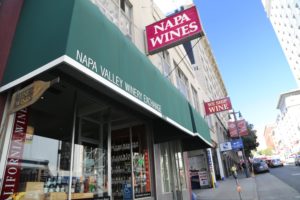
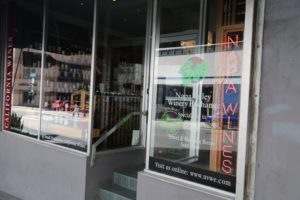


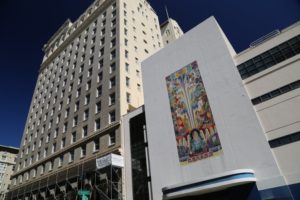




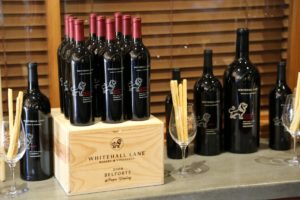



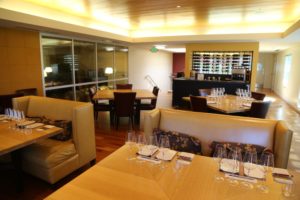
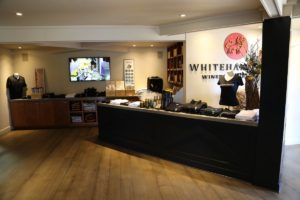

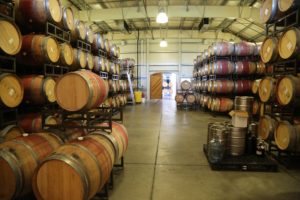
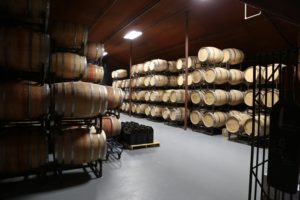




Leave a Reply